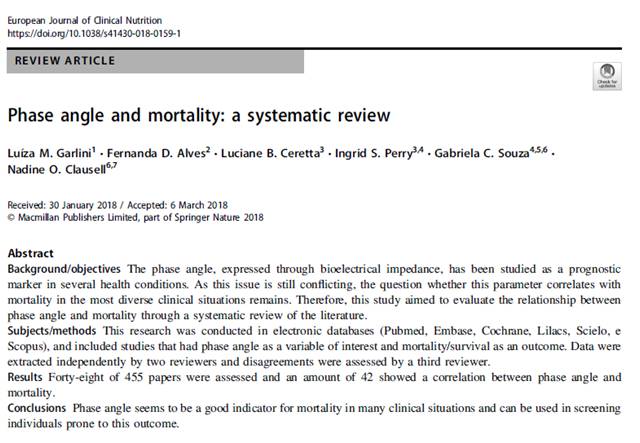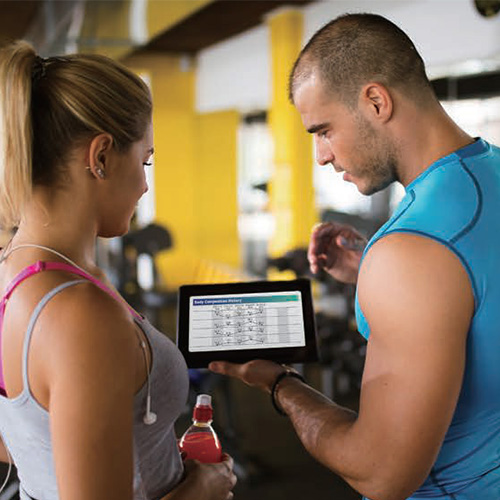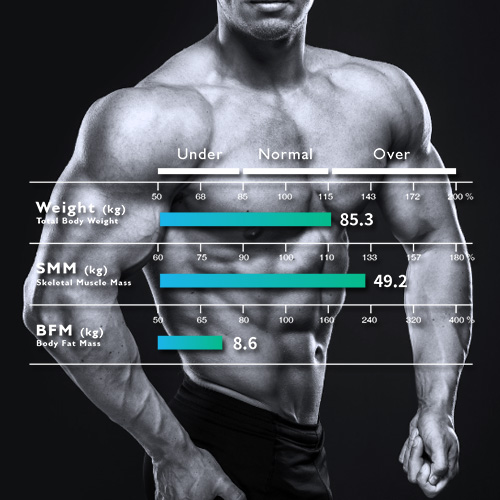What is Phase Angle, and how can you use it?
In addition to body fat, water, and muscle, you may have noticed "Phase Angle" on Charder's more advanced BIA Body Composition Analyzers models. What is it used for?
(You can skip this technical explanation if you're just interested in learning about how to use Phase Angle, and why it's important!)
To explain phase angle, it helps to understand how Bioelectrical Impedance Analysis (BIA) itself works. The electrodes on the device send an electrical current through the subject's body, measuring the total physical impedance (Z) in the process. The impedance varies based on the resistance (R) from body water, as well as the reactance (Xc) generated by cell membranes.

Due to the capacitive properties of cell membranes, when an electric current passes through a cell, a phase shift between current and voltage occurs, causing a time difference that can be measured in degrees (the phase angle) by Charder's devices.
Simply put, phase angle is a bioelectrical impedance measurement that noticeably decreases with age or poor health, and that's really important, because body composition outputs such as fat or muscle don't tell the entire story about health. Two people can have the exact same BMI, Body Fat, and Muscle - but they aren't necessarily equally healthy!
Generally speaking, a higher phase angle means healthier cell membranes. So if your phase angle has decreased significantly, that's generally not a good thing, and we'd recommend a more detailed health check!
 Source: Garlini, L. M., Alves, F. D., Ceretta, L. B., Perry, I. S., Souza, G. C., & Clausell, N. O. (2019). Phase angle and mortality: a systematic review. European journal of clinical nutrition, 73(4), 495-508.
Source: Garlini, L. M., Alves, F. D., Ceretta, L. B., Perry, I. S., Souza, G. C., & Clausell, N. O. (2019). Phase angle and mortality: a systematic review. European journal of clinical nutrition, 73(4), 495-508.
Research published in the European Journal of Clinical Nutrition studied phase angle in three different groups of people, all with similar weight, BMI, and fat levels. They learned that phase angle for ballet dancers (athletes) was significantly higher than people with anorexia (sickness) or constitutionally lean (normal).
|
Anorexia (BMI 16.7±0.5) |
Lean (BMI 16.8±1.0) |
Ballet Dancers (BMI 17.4±0.6) |
Control Group (BMI 22.5±2.8) |
|
|
Fat-Free Mass (kg) |
35.7±1.8 |
33.1±3.0 |
35.6±2.4 |
41.0±4.3 |
|
Fat Mass (kg) |
8.5±1.7 |
8.3±1.6 |
8.9±1.2 |
17.7±4.9 |
|
PBF (%) |
19.2±3.5 |
20.0±3.2 |
20.0±2.5 |
29.7±5.1 |
|
PA (Whole-Body) |
5.09±0.52 |
5.94±0.93 |
6.40±0.51 |
5.84±0.55 |
|
PA (Arms) |
4.17±0.60 |
4.94±1.12 |
5.39±0.65 |
4.41±0.69 |
|
PA (Legs) |
5.63±0.79 |
6.40±1.26 |
7.16±0.90 |
6.51±0.78 |
Source: Marra et al. Bioelectrical impedance phase angle in constitutionally lean females, ballet dancers and patients with anorexia nervosa. European Journal of Clinical Nutrition (2009) 63, 905-908
Using Charder's Body composition Analyzers, both body composition and phase angle can be measured quickly and accurately. Effectively using this key indicator of health is very useful in many fields of application, providing an advanced yet easy-to-understand evaluation for the benefit of patients.




